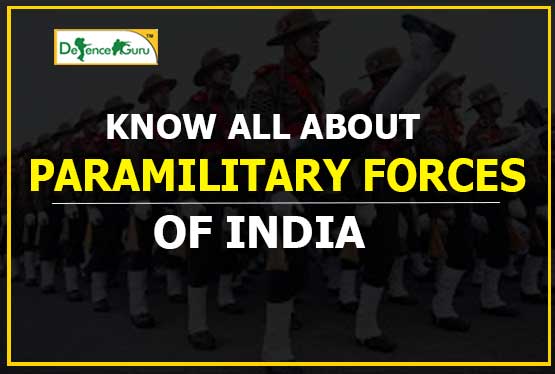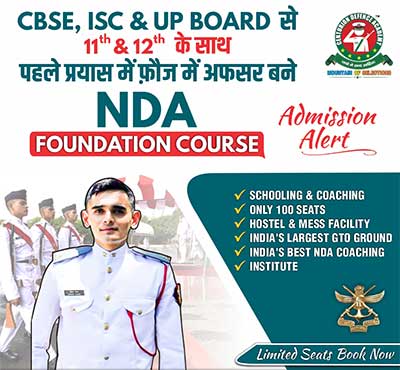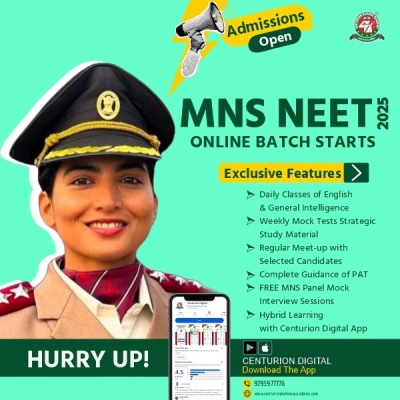Security Forces deployed for diverse roles in border security as well as internal security.
Key Highlights:
- A semi-militarized force whose function is similar to those of a professional military but is not formally part of a country's armed forces.
- Paramilitary forces serve under the Ministry of Home Affairs with a two-tier structure: Central Paramilitary Forces and Central Police Organizations.
- Indian Paramilitary Forces is the second-largest (after China) paramilitary force in the world.
Key Note:
In November 2015 the Home Ministry gave approval to give the status of martyr to personnel from the paramilitary forces who die in the line of duty.
What are the Paramilitary Forces?
A paramilitary forces is a semi-militarized force organized like an army and performs either civil or military functions. The key role of these forces are to protect the internal security of the country such as to conduct fair and peaceful Elections, Terrorists & Maoists protection, VIP protection and help in natural calamity as well as support the defense services in securing the borders of India and only aid in combating external threats when necessary.
Organizational Structure:
The defence forces of India Indian Army, Navy & Air Force comes under the Defence Ministry while Paramilitary Forces comes under the Ministry of Home Affairs. The Central Armed Police Forces (commonly referred to as Paramilitary forces or CAPF) has a two-tier structure - the first called the Central Paramilitary Forces and Central Police Organizations.
Central Paramilitary Forces: Works with the Indian Armed Forces
Central Police Organizations: Works in collaboration or independently, with the Indian Police Force and the Federal Agencies.
Central Armed Police Force (CAPF)
1. Assam Rifles (AR)
2. Border Security Force (BSF)
3. Central Industrial Security Force (CISF)
4. Central Reserve Police Force (CRPF)
5. Indo Tibetan Border Police (ITBP)
6. National Security Guard (NSG)
7. Sashastra Seema Bal (SSB)
Central Police Organisation
- Intelligence Bureau
- Central Bureau of Investigation
- Bureau of Police Research & Development. (BPRD)
- National Crime Records Bureau
- National Investigation Agency
- Sardar Vallabhbhai Patel National Police Academy, Hyderabad.
- North Eastern Police Academy, Shillong.
- National Institute of Criminology & Forensic Science (NICFS)
- National Disaster Response Force (NDRF)
Detailed Role of Seven Central Armed Police Forces (CAPF).
1. Assam Rifles (AR):
- Established in 1835, Assam Rifles is the oldest of all paramilitary forces.
- AR's job is to counter insurgency and hold border security operations.
- There are currently 46 battalions of AR under the Ministry of Home Affairs.
- Since 2002, they are also guarding the 1,643 km long Indo-Myanmar border.
2. Border Security Force (BSF):
- Established in 1965 in the wake of the 1965 Indo-Pakistan war.
- BSF’s job is to keep a watch over international borders against intrusion, check infiltration on the borders and assist the Indian Army during war time.
- Nearly 2.4 lakh personnel are a part of this force and it is also called as the 'First Wall of Defence of Indian Territories'
3. Central Industrial Security Force (CISF)
- Largest industrial security force in the world having 165,000 personnel.
- CISF's job is provide security to Public Sector Undertakings (PSUs).
- Currently CISF provide security cover to 300 industrial units.
4. Central Reserve Police Force (CRPF)
- The CRPF guarded the India-Pakistan Border until 1965, after which the BSF was created. In 2001 Parliament attack too, it was the CRPF troops that killed the five terrorists who entered the premises.
- It counters Left Wing Extremism, assists the State and Union Territories in police operations to maintain law and order.
5. Indo-Tibetan Border Police (ITBP)
- Established after the 1962 Indo-China war, under the CRPF Act.
- It vigils the northern borders, detects and prevents every border violations and helps the locals feel secure.
- In 2004, to achieve “One Border One Force”, the entire stretch of India-China Border was assigned to the ITBP for Border Guarding Duty.
- The ITBP is also trained in disaster management and have been deployed in UN peacekeeping missions in Bosnia and Herzegovina, Kosovo, Sierra Leone, Haiti, Western Sahara, Sudan, and Afghanistan.
6. National Security Guard (NSG)
- The formation of NSG was a consequence of the assassination of Indira Gandhi and Operation Blue Star.
- It was raised to combat terrorist activities and to ensure the states do not witness any internal disturbances.
- They are often referred as Black Cats because of their uniform which consists of a black dress and black cat insignia.
7. Sashastra Seema Bal (SSB)
- Established in 1963, the SSB guard the Indo-Nepal and Indo-Bhutan borders.
- It was only in 2014 that the government approved the recruitment of women as combat officers in SSB.
- Formerly known as the Special Service Bureau, their job is to control anti-national activities and inculcate feelings of national belonging in the border population among others.
Recruitment procedure
-
- UPSC conduct examination for recruitment in different positions in BSF, ITBF, CRPF, CAPF and others.
- For gazetted positions, graduates from any field can apply if they are within the age group of 19 to 25.
- For non-gazetted positions recruitment is based on a selection test for non-graduates.
- Selection exam are conducted in two Phases i.e.
- Paper 1 consists of numerical ability, reasoning, basic intelligence, and general awareness.
- Paper 2 consists of an essay, precise writing and comprehension.
- Preference is given to NCC cadets and sportsmen with outstanding experience.
Facts & Figures Report:
In November 2015 the Home Ministry gave approval to give the status of martyr to personnel from the paramilitary forces who die in the line of duty.
In a recommendation to the government the Commission said, "The Commission is of the view that in case of death in the line of duty, the force personnel of Central Armed Police Forces should be accorded martyr status, at par with the defence forces personnel".
As of January2017, the sanctioned strength of the seven CAPFs was 10,78,514 personnel.
Indian external and internal security represents its strength and courage at national and international level. Dominating in all spheres of security, the Defence Expo 2020 organised in Lucknow, UP showcased the Indian Armed Forces power at Army and AirForce fronts. Indian Armed Forces, which consists of Defense Forces, Paramilitary Forces and Strategic Forces Command plays a major role in ensuring national security. Paramilitary Forces has undergone one of the fastest expansions of paramilitary internal security forces in the world for which these forces need to be upgraded and trained to face the new forms of challenges arising like cyber threats, technological, space warfares. Dimensional steps are undertaken in latest developments for Paramilitary Forces thereby inviting fresh recruitments on various posts to add more power and more dominance of Indian Security.






